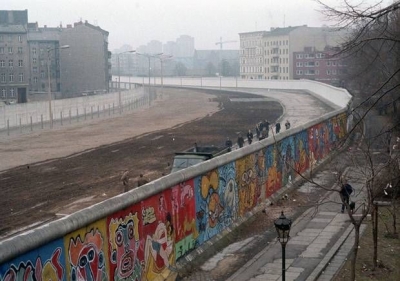
A guarded concrete wall that physically and ideologically divided Germany’s capital, the Berlin Wall stood tall between 1961 and 1989.
Construction of the Wall commenced on August 13, 1961 by the German Democratic Republic (GDR) to ensure people from East Germany did not emigrate to West Germany. The Wall finally fell on November 9, 1989 after East Germany declared all the crossing points along the wall open.
Backdrop to the building of the Wall
In 1949, a war-torn Germany formally split into two independent nations – the Federal Republic of Germany and the German Democratic Republic – with the FDR allied to the western democracies led by the U.S. and the GDR allied to the Soviet Union led by Russia. These superpowers had growing geopolitical tension between them, in what is today known as the Cold War. The city of Berlin, was at the centre of this heated split, with one part under the Eastern bloc and the remaining three with the West under the U.S, Britain and France.
Why was the Wall built?
Free flow of people between the two parts was allowed through Berlin as East Germany had sealed its mainland border from the West along the Elbe river and the mountains of Harz with barbed wire and fire zones.
As time passed, many people from East Germany migrated to the West in search of better jobs and infrastructure.
One in six people fled from the East to the West. This irked the GDR as its economy was deeply affected due to this ‘brain drain’. Thus, in a bid to halt this migration, East German communists were given the permission by Moscow to close the border and build a physical barrier along it.
With information from their informers in the western part that the West will not react, East German Police, in a top-secret operation, established a human cordon along the border with West Berlin. The border forces then went on to build a solid breeze-block wall trapped with barbed wire, from what was earlier just provisional wire-mesh fences.
Picture Credit : Google

